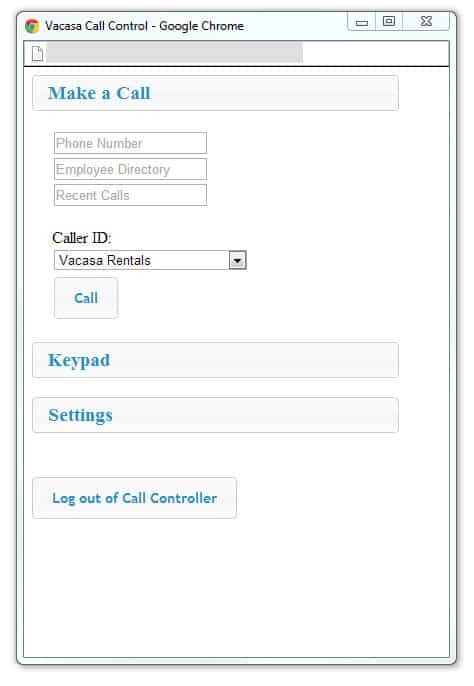Vacasa Rentals employs VoIP in the vacation rentals industry, and now, they are also using WebRTC.
When I thought of doing interviews with WebRTC companies, this is not what I had in mind – interviewing a vacation related company – which makes it all the more interesting.
Placing it in my map of WebRTC company types, Vacasa Rentals falls somewhere in-between Hosters and Stitchers – probably more of a Stitcher.
The reason Vacasa Rentals is interesting is because of several different reasons:
- They are a small/medium sized business – SMB (deciding on where you place the delineation), and they are managing/owning their own telephony system
- They are a premise-less SMB, where all of their IT services are hosted, so they are their own SaaS provider
- They switched from VoIP using SIP to WebRTC
- They’ve built a contact center solution that uses WebRTC only in its backend and not in the part of it facing customers
 When I approached Erik Tylek Kettenburg, CTO at Vacasa Rentals, he was kind enough to spare some time to answer my questions. Here are his answers.
When I approached Erik Tylek Kettenburg, CTO at Vacasa Rentals, he was kind enough to spare some time to answer my questions. Here are his answers.
What is Vacasa Rentals all about?
Vacasa Rentals brings a startup approach to the vacation rentals industry – we are a vacation rentals management company that uses cutting edge technology to cover a wide service area with high quality customer service, great prices, and low management fees. We are able to do this by utilizing remote employees in each of our service areas (Oregon, California, Colorado, Idaho, Washington, and Alaska). We use technology to optimize every aspect of the business to ensure optimal service for our guests in all of our 500+ homes.
How does it relate to VoIP and real time communications?
A large part of our business is conducted over the phone, mostly by our reservationists and guest experience agents- these employees are located all over the Portland area (where we are HQed) as well as in the six states we operate. We use VoIP to quickly route incoming calls from guests and perspective guests to available agents who are best suited to serve them – for instance ensuring that a call is answered quickly by someone with the best skills for the area/home being inquired about.
Anything unique that you do with VoIP?
I imagine the most unique thing we do with VoIP is the level to which we take intelligent routing and CRM integration. We ensure that our agents have all the information they need to quickly and effectively respond to all questions and calls, this helps us provide a great customer experience and keeps overhead low so we can pass the savings on to our customers.

How many employees do you have? Seems like an awful lot of trouble to go to instead of just using Skype if the number is small.
We have 139 employees and have been doubling in size every 6 month or so. When I came aboard in late 2011 Ringcentral was being used, but had already been outgrown and moving to a custom system offered us better features, deeper integration, and a huge cost savings (wholesale minutes vs pay-per-user).
What were you using prior to adopting WebRTC?
We were using a custom implementation of FreeSwitch, we built a lightweight API on top of FreeSwitch using Node.JS and used the Jitsi Softphone for agents.
What challenges were you facing that made you adopt WebRTC?
The biggest challenge given our distributed employees was local router and hardware configurations and throttling of VoIP packets – WebRTC should greatly reduce these issues.
Have you developed your WebRTC infrastructure or your own or used an API vendor for that? Why?
We are using Plivo – we actually were working on putting our own WebRTC layer on top of Plivo (using a media proxy) but once we found out Plivo was building in support for WebRTC I began talking with Mike (their CEO), and we were able to get in on the early release of it. Our switch from custom self-hosted FreeSwitch to Plivo was driven by a desire to lower our support burden and increase our call quality.
What have you used to develop your own back end that integrates with Plivo’s system?
Our backend is written in PHP/MySQL with some elements written in Node.JS. It is built on our custom framework and hosted on Rackspace Cloud and Amazon EC2 servers.
Have you done anything on the agent side, placing the whole WebRTC experience inside the CRM itself or is it two separate windows at the moment?
The WebRTC phone is entirely integrated with the CRM – when a call comes in (or is placed) the agent is presented with all of the relevant info for the current caller including reservations, house information, past calls and emails, etc.
How do you connect your WebRTC endpoints to the telephony systems so people can dial in?
Using Plivo we have a variety of numbers for owners, guests, and potential guests to call – we route calls based partially on which number they contact us through.
Any plans or thoughts of adding video support?
Not at this time, as our calls generally originate from PSTN.
What about letting customers connect from the browsers instead of dialing using phones?
We have discussed this as a future option but generally we find that people still prefer to pick up a phone.
What’s next for Vacasa Rentals?
Many things! We continue to work on reducing overhead and improving our internal systems using technology. We are looking at deploying Chromebooks to employees to lower the support burden further and reduce the cost of adding employees – we are able to do this because with WebRTC we no longer need our employees to install anything. We are also implementing features to compliment WebRTC such as intra-company chat, all embedded into the CRM system.
–
The interviews are intended to give different viewpoints than my own – you can read more WebRTC interviews.
